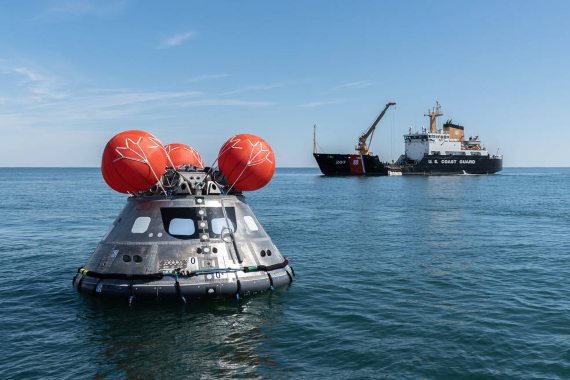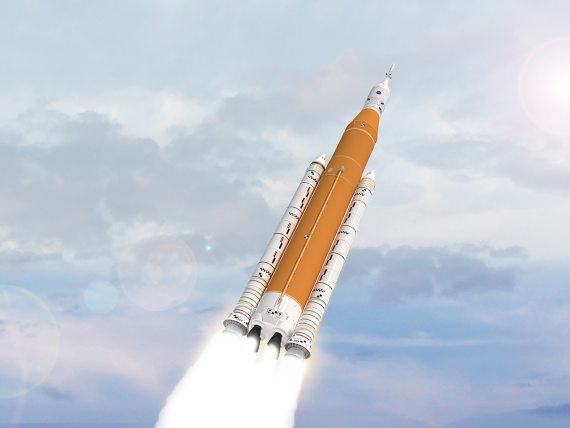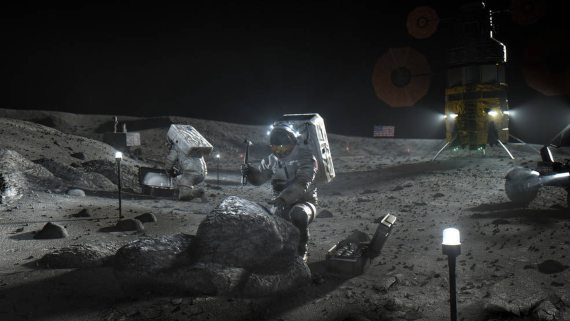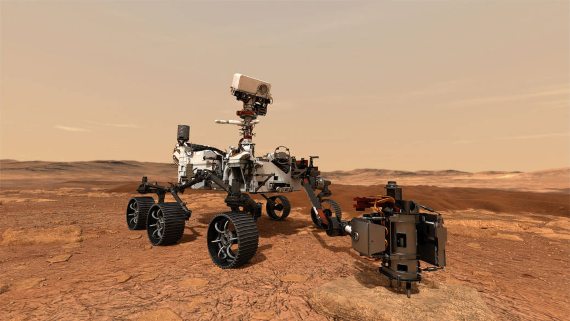At the height of the Apollo program, NASA was absorbing 4.4% of the US federal budget. Although the motivations at that time were political, the lunar odyssey inspired the dream of a humanity extended beyond its earthly cradle. But that dream would be shattered; NASA’s funding plummeted to below 1% in the late 1970s, and to 0.5% in this century. However, Donald Trump today dreams of returning to the Moon in 2024, conquering Mars and making space the next great mother lode; and although it does not seem that this president can be described as a dreamer, more than a few analysts in the sector are furrowing their brows. Will this space race 2.0 actually be viable, particularly when a pandemic now dominates the stage?
NASA’s human spaceflight program has suffered some serious setbacks in recent years. The mothballing of the space shuttles in 2011 left the US without its own transport to space, a problem accentuated by the cancellation in 2009 of what was to be the successor platform, the Constellation project. In 2011, NASA announced the definitive replacement of the space shuttles with the Space Launch System (SLS) and the manned Orion spacecraft, currently under development and testing.

The SLS has been tasked with taking astronauts to the Moon in 2024, including the first woman, establishing a stable presence there and conquering Mars in 2033. However, neither the lunar program Artemis —named in honour of Apollo’s twin sister— nor the Martian dream are yet adequately funded. While the space agency has awarded contracts for the development of lunar vehicles, announcing six new Artemis missions in addition to the three already approved and defending the sustainability of lunar colonisation, the money is still lacking; NASA has requested $71 billion until 2025 to finance Artemis, with a 12% budget increase for next year. But this has met with resistance from Congress, which has ignored Trump’s appeal and frozen the allocation for 2021.
No time to develop, launch, and validate
NASA Administrator Jim Bridenstine is still hoping to convince the Senate at the end of the year to approve the extension. But in the opinion of Casey Dreier, chief space policy advisor to the Planetary Society, the refusal of Congress is the nail in the coffin for the 2024 target: “A 2024 lunar landing is extremely unlikely at this point,” he tells OpenMind. “There just isn’t enough time for NASA to develop, launch, and validate the new hardware needed to land on the Moon.” “You can’t take shortcuts on the way to the Moon,” he says.
The truth is that, far from the era of blank cheques during the Apollo programme, public funding for human space exploration suffers from chronic unease. “In part, this is due to the fact that oftentimes such endeavours do not provide immediate tangible benefits to the economic development of our society and have a questionable return on investment,” Nikolaos Iliopoulos, an expert in sustainability science from the University of Tokyo, tells OpenMind. But the solutions to this obstacle were already being contemplated in the gestation of this new space race: the reuse of vehicles —something that had already begun with the space shuttles— and the entry into play of the private operators of the so-called New Space.

The participation of the new space companies, no longer as mere contractors, but as protagonists of the whole process, has the advantage of reducing the budgetary pressure on the public system; but obviously, this scheme will only be sustainable if it is profitable for the companies. Jeff Greason, entrepreneur and space sector consultant, and co-author of the 2019 report The Economics of Space: An Industry Ready to Launch for the Reason Foundation, which advocates the development of commercial activity in space, tells OpenMind: “The economic development of space, and the expansion of human civilization beyond the Earth, are goals that we have been taking incremental steps toward for many years.” “Government efforts in space have a role to play, but they are not the only actor.”
Greason points out the mainstays of this commercial exploitation, such as private transportation systems to the International Space Station (ISS) and the Moon, as well as the need for a future orbital station to replace the ISS at the end of its life. Although this hypothetical facility would take over from the research carried out on the ISS, Greason insists on the premise of a more commercial orientation: “We should continue to explore, but we must begin to make more economic use of what we have found, which will benefit the inhabitants of the Earth”; one example is the exploitation of lunar resources.

However, Iliopoulos fears that this profit-seeking entry of private capital could undermine scientific objectives: “It is of vital importance to ensure that public space agencies remain economically relevant in the field.” Iliopoulos proposes solutions such as giving companies property rights to extraterrestrial enclaves: “This would allow such entities to engage in activities such as space mining, which could indirectly and partially fund (in the form of taxes) the activities of public space agencies.” Thus, both the private and public sectors are already indispensable to the new space race, as analyst Carie Mullins, senior engineer at the consulting firm Bryce Space and Technology, points out to OpenMind: “Government support and venture capital are the keys to continuing new space ventures.”
The support of public opinion, a key question
A key question is whether the public will be willing to support the titanic investments required. In 2019, a Gallup poll revealed that a majority of Americans, 53%, supported manned missions to Mars, something that was not the case even in the golden days of the Apollo programme. Respondents were overwhelmingly supportive of space spending and even of increasing it. But those were the days before the COVID-19 pandemic, a more urgent concern today that is the focus of attention and represents an extraordinary amount of unforeseen spending.
The extent to which the pandemic will affect public perception of the new space race is still unknown, but experts already fear its impact, both financial and on the pace of work. “You can’t build a spaceship remotely,” Dreier remarks. The Planetary Society analyst says that the measures imposed to combat the coronavirus have left NASA facilities operating at half throttle, which has slowed down the SLS testing programme: “Work is resuming, but is going more slowly than originally planned.”

Both Dreier and Mullins point out that the halt in economic and industrial activity may have affected the space agency’s network of suppliers, posing a potential threat to the chain of development of the spacecraft and equipment. However, the Bryce engineer notes that “space has been deemed essential by most government agencies, allowing work to continue,” as demonstrated by the launches of SpaceX and NASA itself at the height of the pandemic. But Iliopoulos fears that the shadow of the coronavirus is lengthening, and that it will lead to “a redistribution of monetary resources that will ultimately decrease NASA’s allocated budget for the sake of increasing R&D on issues relevant to public health and infrastructure development.”
For James Vedda, senior analyst at the Aerospace Corporation’s Space Policy and Strategy Center, “it’s a bit early to assess the pandemic’s effects,” although this expert stresses to OpenMind that, “so far, it has not resulted in cancellation of any NASA exploration efforts, and delays are measured in months,” although he acknowledges that the situation could get worse. Nevertheless, Vedda is confident: “I believe that NASA’s exploration initiatives, including Moon and Mars plans, will go forward, regardless of the results of our election in November. The big question is the schedule.” “The timetable could stretch several years,” he predicts.
Dreier is also optimistic about the end of the journey: “I believe there is a significant possibility that NASA could return humans to lunar orbit and the surface by the end of the decade.” The expert stresses that not only is the technical path being paved in terms of rockets, capsules, lunar landing vehicles and a lunar space station, but also that “there is a growing political and international consensus on returning humans to the Moon, which can help maintain consistency of focus through any potential U.S. presidential administration changes.” “So while 2024 is very unlikely, the overall situation for sending humans beyond low-Earth orbit is brighter than at any point in the last 45 years,” he concludes.
Comments on this publication